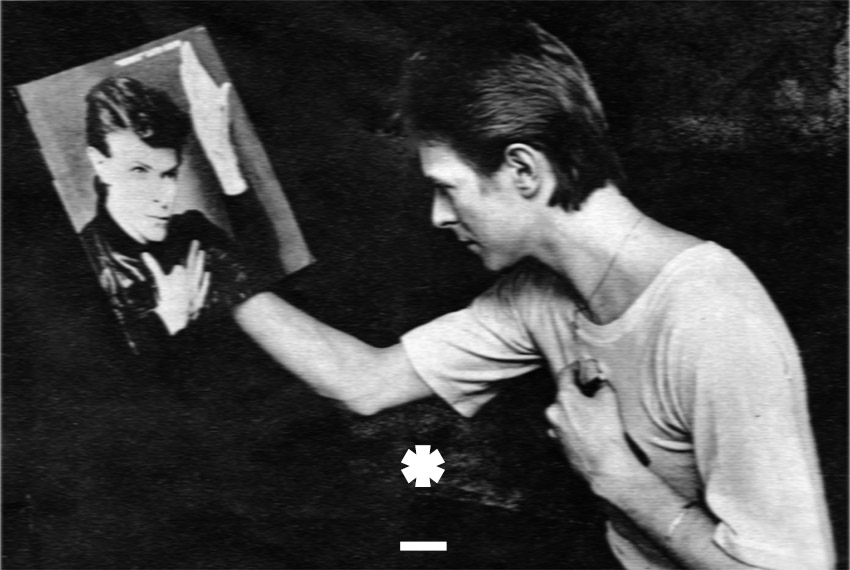1975-1976: The Thin White Duke
DAVID BOWIE AND “FAME” ON SOUL TRAIN
Rediscovering American soul music, in 1975 Bowie decamped to Philadelphia to work on his own version of R&B he’d dub “Plastic Soul.” Diamond Dogs gave hints of it with “1984”, but hearing a complete album dissecting what this meant was and still is astounding. Rather than turn to the soul music he had heard in his younger years, he got turned on by the contemporary Philly Soul sound being heard not only on the radio, but in the streets and consoles of Black America.
@guitarlos1 met Bowie @ 23 been quite an https://t.co/mJUHLKkvsu you David#now&forever.We wanted to change the world pic.twitter.com/sEwhjKGjIc
— carlos alomar (@guitarlos1) January 12, 2016
“Fame” co-written by John Lennon, presents this draft of a new malleable sound that David could integrate. Working with brilliant vocalists like Luther Vandross and risk-taking guitarists like Carlos Alomar, Bowie wanted to see if he could make music that could be played in those same dance halls he first heard that new lush sound. Arguably fueled by equal parts substance abuse, paranoia, and a desire to reinvent himself in America, Young Americans was this plasticine attempt to capture the spontaneity of the sophisticated sounds bubbling under an increasingly segregated radio dial. For a brief moment, when the reissue of “Space Oddity” climbed up charts on both shores and when “Fame” hit the top of the American one, rather than bask in this renewed success, David was confronting demons he never had to before. Legal battles had rendered all his financial profit nearly nonexistent, leaving him knowingly seeing a future where whatever he earned would be surrendered to someone else. All of this serving as to drive him into seclusion.
zZ SAMPLER: DAVID BOWIE 1975-1976
Station to Station laid bare in the creation of his next character, the Thin White Duke, everything that was troubling him. Taking cues from the alien character he portrayed in Nicolas Roeg’s The Man Who Fell to Earth, now David presented this impeccably tailored version of himself that had underlying currents of frailty and distance from all the deeply emotional things he was singing about.
DAVID BOWIE AND “STAY” LIVE ON THE DINAH SHORE SHOW
Now, rightfully, Station to Station is being recognized as this fascinating and ultimately successful bridge of thought. Here lay Bowie trying to process how his love of American Soul can be reconciled with a new love that seemed to work against it: the decidedly European and electronic sounds of Germany’s Krautrockers. Whether propelled by the massive amounts of substance abuse or the sheer will to see whatever increasingly detached apocalyptic vision David had threw, all his cohorts, from Carlos Alomar to Earl Slick captured a mutant sound that had little parallel to anything out there then. Somehow, for him to survive, this detachment from his original audience (whatever was still around after Young Americans) had to occur. Those willing to stick around, even when he headed back toward Europe, would reap the fruits of this sacrifice.




